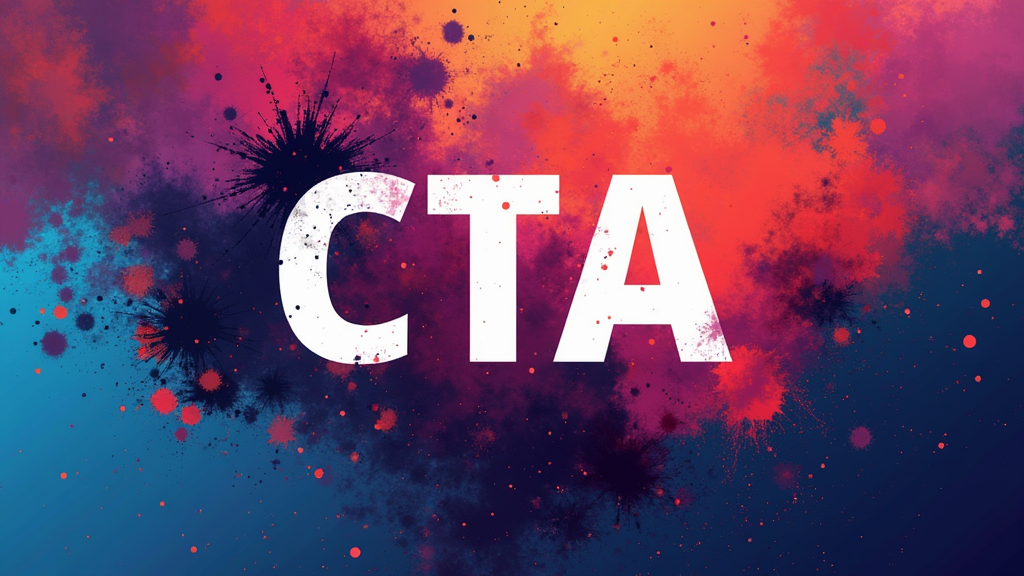

Hi, Cliff Here
A good copy can make a difference in affiliate marketing. One key element is writing compelling call-to-action (CTA) copy. The correct CTA copy encourages visitors to take action immediately. If done well, it can boost conversions and drive sales. In this article, I share ideas and steps to create engaging CTA copy for affiliate marketing campaigns.
Too often, people overlook the importance of a focused CTA. It might be a small detail easily neglected, but even a minor tweak in your text can be a game-changer. You can turn your average page into a conversion machine with clear steps and practical advice. Read on for a thorough guide to writing effective CTAs that resonate with your audience. To add further depth, we explore strategies and real-world examples that help solidify your approach and clarify why every word matters.
Step 1: Set Clear Goals for Your CTA Copy
Before writing any CTA copy, it is essential to have a clear goal. Ask yourself what you want your audience to do when they see your CTA. Do you want them to click through to a product page, sign up for a newsletter, or make a purchase? Understanding your goal helps shape your message and tone. The action you want your visitor to take should come through immediately, so there is no confusion about the next step. Clarity in your goal can make all the difference.
Additional Insights: Establishing specific, measurable objectives for your CTA is vital. When you break down exactly what you expect your visitors to do, tailoring your language and visual cues becomes easier. Think about the benefits for the visitor as well as for your business. Whether aiming for more clicks, email subscriptions, or sales, defining your goals directs your creative process and sets you up for accurate performance tracking. Take some time to jot down your ideas and refine your goals. This preparatory step can save you time and effort once your campaign is live.
Step 2: Know Your Audience and Offer
A strong CTA is firmly rooted in a deep understanding of your audience. Knowing their interests, needs, and pain points allows you to tailor your message effectively. Your offer also plays a big part; it must appeal to your audience’s desires and solve a real problem. Insight into what makes your target audience tick can inform your choice of words and visual style, ensuring that your CTA resonates personally.
Extra Details: To really connect with your audience, spend time researching their demographics, preferences, and everyday challenges. Use surveys, social media interactions, and past campaign data to gain insight into what drives their decisions. By doing so, you not only build credibility but also demonstrate that you truly understand their unique needs. Furthermore, make it a point to highlight what sets your product or service apart from competitors. This extra context helps create a more compelling argument for why the visitor should take action right now.
Step 3: Keep It Simple and Actionable
Compelling CTA copy doesn’t try to say too much. Instead, it relies on clear, straightforward language that tells the visitor exactly what to do next. Overcomplicating your message can lead to confusion and hesitation. Simple copy focusing on one explicit action is often more persuasive and straightforward for visitors to process. For example, choose one direct command instead of multiple verbs to keep your instruction focused and impactful.
Helpful Tips for Simple CTA Copy:
- Use action verbs like “Get”, “Buy”, “Track down” (in place of the original word for discover), or “Start”.
- Keep your instructions brief and easily understood.
- Avoid unnecessary jargon or overly complex language.
- Structure your sentences so that the main action is prominent.
Example: If you want visitors to click through to learn more about a product, a CTA such as “Track Down More” or “Get Started Now” makes your intent clear. This approach minimizes any potential confusion and effortlessly guides visitors toward the conversion goal.
Further Elaboration: Simple language in your CTA can establish trust with your readers because it appears honest and straightforward. Sticking to one goal per button or link reduces mental clutter and helps lead the user to the desired action. Remember, less is often more in marketing copy. By keeping your words to a lean minimum, you also allow yourself to create strong visual impressions that complement the text, resulting in a harmonious call to action.
Step 4: Create Urgency and Relevance
One of the secrets of persuasive CTA copy is creating a strong sense of urgency. When visitors feel that an offer is time-sensitive, they are more likely to take immediate action. However, the urgency should be genuine and directly related to the actual value proposition behind the product or service. Making your CTA both timely and relevant can overcome hesitation by tapping into your audience’s desire for immediacy.
Ways to Create Urgency:
- Use phrases such as “Limited Offer” or “Ends Soon” to signal that time is running out.
- Showcase a time-bound element or indicate that supplies are finite.
- Emphasize the unique benefits that come from acting swiftly.
Making It Relevant:
- Relate the urgency to current trends, special occasions, or seasonal events.
- Clearly state the real benefits visitors receive by acting quickly.
- Connect the offer to everyday challenges or desires within your niche.
Additional Thoughts: To further boost urgency, consider adding limited-time discounts or exclusive bonuses to your CTAs. It helps if your audience sees that delaying action might mean missing out on a valuable opportunity. This added layer of relevance can transform a standard call to action into a compelling nudge that prompts immediate response. Remember, urgency should never feel forced; it must come off as a natural extension of the benefits you provide.
Step 5: Test Different CTA Approaches
Even the best-planned CTA copy benefits from testing. Different words, colors, and placements can significantly affect performance. What works for one product or audience might not work for another, so testing variations is key to identifying the most effective approach. Using a small sample allows you to fine-tune your choices so that your final version truly resonates with your visitors.
Experiment with These Elements:
- Wording: Try different action words or phrases to see which resonates best.
- Design: Test various button colors, sizes, and shapes. Even small adjustments can more effectively catch the visitor’s eye.
- Placement: Some CTAs work better above the fold, while others might perform well when embedded within the content.
Testing Methods:
- Run A/B tests on different versions of your CTA copy.
- Monitor key metrics like click-through rates and conversion rates.
- Collect user feedback to understand their perspective and experience.
Expanded Insight: Testing is a cycle of continuous improvement. Once you gather data from different versions, take the time to analyze the results carefully. Look for patterns that indicate which elements best capture your audience’s attention. Use these insights to refine your copy further. The process helps improve your current CTA and provides valuable benchmarks for future campaigns. It’s a learning process that can eventually lead to a more consistent and effective marketing strategy.
Step 6: Optimize Placement and Design
Even the sharpest CTA copy can be overlooked if it is incorrectly placed or designed to stand out. How your CTA is integrated with your page layout plays a crucial role in its performance. A well-placed and designed CTA naturally draws the visitor’s eye and makes the action prompt almost irresistible. The placement should feel like a natural part of the reading experience, ensuring the visitor does not have to hunt for it.
Consider the Following When Optimizing Design:
- Position CTAs in high-visibility areas, such as near the top of the page or within engaging content areas.
- Employ a design that contrasts effectively with the rest of your content so that the CTA truly pops.
- Leverage whitespace to provide breathing room around the CTA element and avoid clutter.
- Maintain consistency with your webpage style while ensuring the call-to-action stands out clearly.
Further Explanation: The design and placement of your CTA contribute significantly to the user experience. Minor adjustments, such as shifting the button a few pixels or changing its color slightly, can dramatically impact conversion rates. Review various design layouts and consider using heat maps or visitor recordings to understand how users interact with your page. This information can help you fine-tune every design aspect, making it more intuitive and engaging.
Step 7: Continually Revise and Evolve
Marketing strategies and audience preferences change over time. What worked last year might not perform as well today. This means that your CTA copy should not remain static. Regular revision and evolution of your content are significant for keeping up with trends and maintaining effectiveness. Stay sharp by continuously updating your copy based on new insights and performance data.
Strategies for Ongoing Improvement:
- Regularly analyze performance metrics to spot areas for improvement.
- Keep abreast of the latest trends and technological advances in affiliate marketing.
- Ask for feedback from your audience to determine what they find engaging and clear.
- Implement minor, consistent tweaks rather than waiting for significant changes to be necessary.
Additional Commentary: Fine-tuning your CTA copy is an ongoing adventure. By setting up periodic reviews of all your campaigns, you allow yourself the opportunity to adjust to market changes as they happen. Even a slight change in wording or design can bring noticeable improvements. Embrace this next stage of your marketing strategy by revising a regular and enjoyable part of your routine. Over time, these minor improvements add up and can substantially boost your conversion rates.
Common Questions & Troubleshooting
How do I know if my CTA copy is working?
Track metrics such as click-through rates, conversion rates, and bounce rates to measure your CTA’s performance. Review this data regularly and compare it to your expected outcomes. Sometimes, small changes in the copy can lead to noticeable differences in performance, so it is essential to keep an eye on your statistics.
What should I do if my CTAs aren’t converting?
- Review the wording of your CTAs to ensure it is clear and actionable.
- Test different placements on your page; subtle changes in location can have a significant impact.
- Ensure your offer is compelling. Often the issue isn’t the copy, but the overall value proposition behind it.
How do I balance persuasive language with authenticity?
The key is to keep your promises and maintain honesty in your communication. Your CTA should reflect genuine benefits without exaggeration. This honest, transparent approach builds trust with your audience and makes them more comfortable taking the desired action.
Final Thoughts & Next Steps
Compelling CTA copy in affiliate marketing is about clarity, relevance, and the willingness to fine-tune your approach continually. Setting clear goals, understanding your audience, and keeping your messages simple can create CTAs that prompt action. Using urgency and continuously testing various approaches boosts your chances of success.
Your Action Plan:
- Clearly define the purpose of your CTA and align it with your marketing goals.
- Study your audience to craft a message that resonates and offers value.
- Keep your language direct, encouraging immediate action with simple, compelling words.
- Create an authentic sense of urgency, highlighting limited offers or timely benefits.
- Consistently test and adjust elements to pinpoint the most effective combinations.
- Review the placement and design of your CTAs to ensure they capture attention immediately.
- Plan regular revisions of your CTAs to keep up with market changes and audience feedback.
Implement these steps gradually and monitor the results. A/B testing and ongoing data analysis will help refine your copy further. What is one change you will make to your CTA copy today? I encourage you to take action and share your thoughts with other marketers. Your feedback will help create a clearer picture of what works in affiliate marketing, fostering a community of growth and shared success. You set the stage for consistently improved results by continually iterating your strategies. Bottom line: every slight improvement in your CTA can translate into significant gains for your overall marketing efforts.
Conclusion
The Call to Action (CTA) is a crucial component of our strategy; visit this link for additional information. However, it is equally important to recognize that engaging content, compelling visuals, and strategic placement are vital elements that collectively enhance audience engagement and drive conversions.
If I can help you, please leave a message, and I will reply. Please feel free to leave any comments you may have on this website.
Cheers
Cliff
Companies pay careermarketingwithcliff.com a small commission or other compensation for promoting their website or products through their affiliate program.
Prices are exactly the same for you if your purchase is through an affiliate link or a non-affiliate link. You will not pay more by clicking through to the link.


This is such a crucial topic that doesn’t get nearly enough attention in affiliate marketing circles. Crafting a strong call-to-action can truly make or break a campaign. I really appreciate how you broke down the importance of clarity, urgency, and emotional appeal in CTAs—those elements are often overlooked, yet they make all the difference in conversions.
In my opinion, mastering CTA copy is one of the most valuable skills for any affiliate marketer. It’s not just about telling people what to do, it’s about inspiring them to act in a way that feels natural and aligned with their needs. Your tips here are not only practical but easy to apply, which makes this post a great resource for both beginners and seasoned marketers alike.
I fully concur with your assessment of CTAs; it is evident that this topic deserves increased focus and attention.